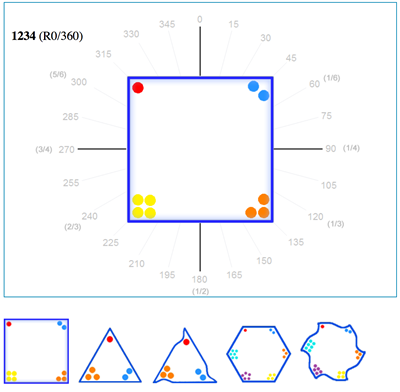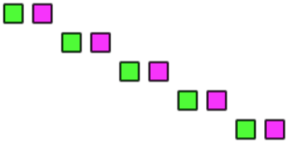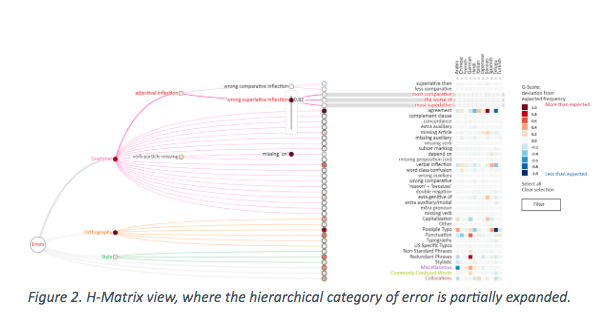The Mind Zone aims to help Ontario students develop their cognitive abilities through conceptually-based math & language learning apps & resources
Mind Zone Apps
The Math + Coding Apps
REPEATING PATTERNS – MATH PATTERNS, ART, MUSIC + CODING
BEAUTIFUL PATTERNS
Patterns are beautiful:
… and animate them with code!!
THE STORY!

Hansel and Gretel discover colourful repeating patterns.
With a coding platform where students can create, dynamically control, save and share their mathematical art.
28 colour pages. Classroom-tested. With math lesson ideas. And coding connections.
$12 + shipping (order multiple copies to reduce per book shipping cost)
WATCH Classroom Documentaries from Grades 1-3.
READ a White Paper on Computational Modelling in Elementary Mathematics Education
Development, research and outreach support from ORF-RE, SSHRC& MKN.
SYMMETRIES
THE MORE IT CHANGES, THE MORE IT STAYS THE SAME.
CODING APPS


 We have 3 coding environments to try:
We have 3 coding environments to try:
See descriptions below The Story section.

For centuries, Martians have schemed to conquer Earth. Now they have a plan: Math + Coding Attack!
Prepare your brain before Martians turn it to mush!
Study Math. Learn Code.
THE STORY
- Symmetry: the more it changes, the more it stays the same.
- Link to a coding platform where students can create, dynamically control, save and share their mathematical art.
- $12 + shipping (order multiple copies to reduce per book shipping cost)
- 28 colour pages. Classroom-tested. With math lesson ideas. And coding connections.
WHAT IS SYMMETRY? (4.2 minutes)
A symmetry is a transformation that leaves a shape looking unchanged.
ROTATION & REFLECTION SYMMETRIES

Use Code to Control Symmetry Combinations
BUMPER SYMMETRIES WITH SQUARES

What happens when symmetries of the square bump together and apply their transformations to one another?
Use code to control bumper symmetries with squares. Try it Now!
BUMPER SYMMETRIES WITH TRIANGLES

What happens when symmetries of the triangle bump together and apply their transformations to one another?
Use code to control bumper symmetries with triangles. Try it Now!
Watch a CLASSROOM DOCUMENTARY from a Grade 2/3 classroom.
THE LANGUAGE APPS
H-Matrix, Visual Analytics Tool: Essay Errors According to Learners’ First Language
Visit the Vialab project page
Get the code – For getting access to the code, visit our GitHub repository
This web application is a tool for language teachers to investigate and understand types of
errors given a learner’s mother tongue.
This tool supports tasks such as identifying specific categories of errors (Figures 1 and 2) for a
student whose first language is, for instance, Spanish. Now the teacher can plan and modify
lessons to give extra attention to these error categories.
Additionally, our tool has a second view (Figure 3) where the teachers can find specific examples of the types of errors in the essay text. These examples can be used for both understanding the learners’ errors caused by their first language backgrounds, and for preparing real examples to demonstrate in the classroom. We hope this tool can help teachers and learners take advantage of the students’ native languages when studying English, consequentially improving the students’ confidence and English fluency.
Figure 3

Background:
Growing attention in research and teaching communities is being placed on the cognitive growth of learners in mathematics. Across Canada, educators are tapping into the various facets of cognition to motivate, stimulate, and support their learners. From coast to coast in Canadian research, the message appears clear: learners’ cognitive growth is paramount to improved achievement and engagement in mathematics. Of primary importance to this research is the development of conceptually based learning tools that can enhance learners’ cognitive abilities in mathematics and teachers’ pedagogical practice so as to foster improved achievement and enriched understanding of the role of mathematics in understanding the world. In this research, we seek to address the relative dearth of conceptually based, pedagogically rich, and high-quality design mathematics learning apps.
Interventions:
The apps we will develop for this project will be unique in two ways: (i) they will employ story-based contexts, and (ii) they will rely on infographics research to offer multimodal modeling of mathematics concepts and relationships. The apps will engage learners in multi-representational inquiry-based explorations of mathematical concepts and processes in the K-8 curriculum, using dynamic, interactive simulations and games, wrapped into a story context that engages cognitively, emotionally and viscerally. We will investigate specific features of app design, development, and implementation in terms of how different affordances influence learners’ attention, engagement, and motivation. We hope to shed light on how dynamic and interactive visual representations of mathematics are interpreted, judiciously used,
We will investigate specific features of app design, development, and implementation in terms of how different affordances influence learners’ attention, engagement, and motivation. We hope to shed light on how dynamic and interactive visual representations of mathematics are interpreted, judiciously used, built with, and applied, how they open up new curricula possibilities in mathematics, and to articulate ways that parents and teachers could orchestrate learners’ activities with these representations so as to offer support in fostering young learners’ mathematical fluency and understanding.
NUMBER SENSE APPS
Games and puzzles to develop number sense.

Developed by Dr. Immaculate Namukasa, Western Education












